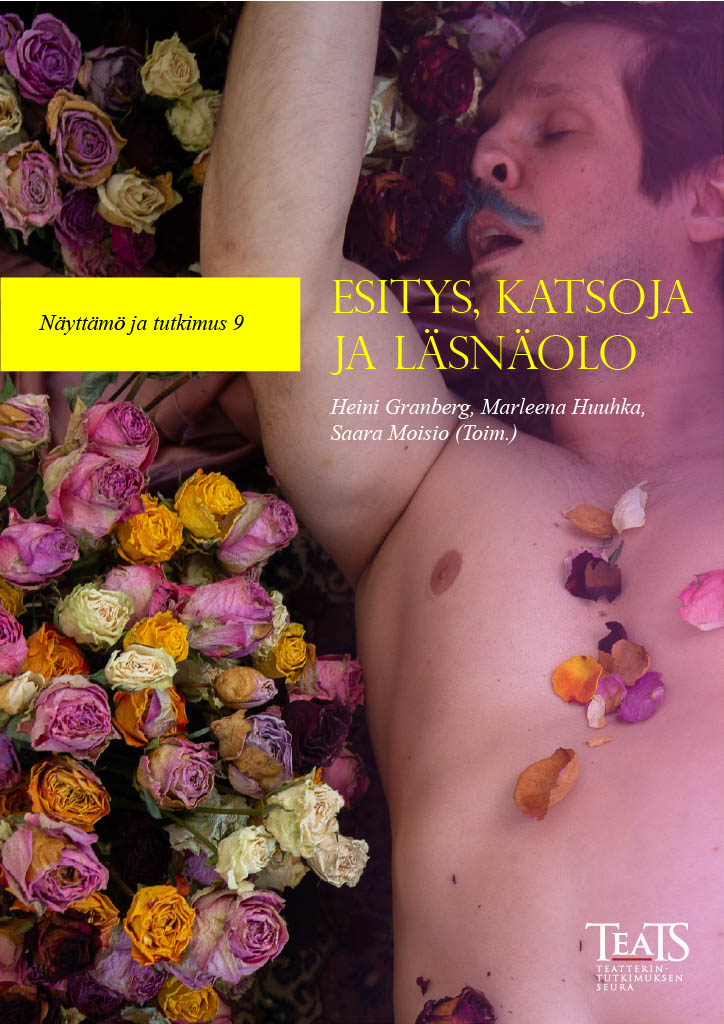Katsojan läsnäolo esityksessä
Tasapainoilua intentioiden välillä
Abstract
In this article, I analyse the ways contemporary dance spectators describe achieving and not achieving presence in performances. The analysis is based on interview material collected from 21 viewers of contemporary dance in three different case studies. I focus on examining the metaphors repeated in the speech of the interviewees, which they use to describe expectations, satisfaction, or dissatisfaction in performance experiences. In the interpretation of the material, I use the concepts of sensorimotor understanding, kinaesthetic resonance, and affective framing from theories of the embodied mind. I show how, from the audience’s perspective, presence is something that is expected from performances and what spectators aim to achieve when attending them. I suggest that presence is essentially influenced by the balancing of the spectator's attention between the different elements of the performance. In the end, presence depends on how the spectator recognizes the intentions of the performers, anticipates them, and adapts their own intentions to them.

Downloads
Published
How to Cite
Issue
Section
License

This work is licensed under a Creative Commons Attribution-NonCommercial-NoDerivatives 4.0 International License.




